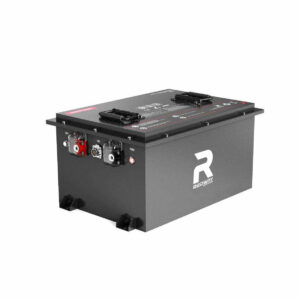How Can Mobile Apps Enhance Off-Grid RV Power Control?
Mobile apps enable real-time monitoring and control of off-grid RV power systems, allowing users to optimize energy use, adjust settings remotely, and receive alerts. These apps integrate with solar panels, batteries, and inverters, providing data-driven insights to maximize efficiency and reduce reliance on traditional power sources. They simplify energy management for travelers seeking sustainable, self-sufficient solutions.
What Are the Core Components of an Off-Grid RV Power System?
Off-grid RV power systems typically include solar panels, lithium batteries, inverters, charge controllers, and a mobile app interface. Solar panels harvest energy, stored in batteries via charge controllers. Inverters convert DC to AC power, while mobile apps provide real-time data on energy production, consumption, and storage levels. Advanced systems integrate GPS tracking for sunlight optimization.
How Do Mobile Apps Improve Energy Efficiency in RVs?
Mobile apps analyze energy usage patterns, suggest optimal charging times, and automate load management. They enable users to prioritize power for critical appliances, schedule device operations during peak solar hours, and remotely shut off non-essential systems. Machine learning algorithms adapt to user habits, reducing waste and extending battery life by up to 30% in field tests.

Advanced apps now incorporate weather prediction APIs to adjust energy reserves before storms. Users can create custom power profiles for different scenarios – boondocking vs. campground stays – with one-touch activation. Real-time wattage monitoring at individual outlet levels helps identify phantom loads draining batteries. Some systems even integrate with EV charging stations, balancing RV and vehicle power needs automatically.
| Feature | Energy Savings | Implementation |
|---|---|---|
| Adaptive Charging | 18-22% | AI-driven solar scheduling |
| Load Prioritization | 15-20% | Circuit-level control |
| Predictive Analysis | 25-30% | Usage pattern learning |
Which Safety Features Do Smart RV Power Systems Offer?
Modern systems include overload protection, temperature monitoring, and automatic fire suppression alerts. Mobile apps notify users about voltage fluctuations, battery overheating, or potential short circuits. Geofencing triggers automatic shutdown when the RV is unoccupied, while biometric authentication prevents unauthorized access to power controls. Waterproof Bluetooth-enabled circuit breakers add redundancy to digital safeguards.
Why Choose Lithium Batteries Over Traditional Options?
Lithium batteries offer 95% depth of discharge versus 50% for lead-acid, doubling usable capacity. They weigh 70% less, endure 5,000+ cycles, and charge 5x faster. Integrated battery management systems (BMS) communicate with apps to predict lifespan and prevent overcharging. Thermal stability ensures performance from -20°C to 60°C, crucial for extreme RV environments.
Lithium batteries maintain consistent voltage output throughout discharge cycles, unlike lead-acid models that lose power exponentially. This flat discharge curve allows appliances to operate at peak efficiency until the battery is nearly empty. Advanced BMS technology enables cell-level monitoring, automatically balancing charge across battery banks and isolating faulty cells without shutting down the entire system.
| Parameter | Lithium | Lead-Acid |
|---|---|---|
| Cycle Life | 5,000+ | 500-800 |
| Weight (100Ah) | 26 lbs | 65 lbs |
| Efficiency | 99% | 85% |
How Does AI Optimize Solar Charging Schedules?
AI analyzes weather forecasts, travel routes, and usage history to create adaptive charging plans. Computer vision maps roof shadows on solar panels via smartphone cameras, while neural networks predict energy needs based on upcoming terrain. The system automatically tilts panels using IoT-enabled actuators, increasing yield by 25% compared to static installations.
What Maintenance Features Do Smart Power Apps Provide?
Apps track component health scores, schedule firmware updates, and guide users through troubleshooting. Augmented reality overlays highlight physical maintenance points via smartphone cameras. Predictive algorithms notify users about aging batteries or dirty solar panels 2-4 weeks before issues arise. Remote diagnostics allow technicians to analyze systems without onsite visits, reducing downtime by 60%.
“The convergence of IoT and renewable energy has revolutionized RV power management. Our Redway systems now use edge computing to process data locally, ensuring functionality in remote areas with spotty connectivity. Future iterations will incorporate vehicle-to-grid technology, letting RVs sell excess power back to utilities while parked.”
— Redway Power Systems Engineer
FAQs
- Can these systems power air conditioning?
- Yes, 3000W+ inverters paired with 400Ah lithium batteries can run AC units for 6-8 hours when properly solar-charged.
- Do apps work without internet?
- Bluetooth and mesh networks maintain basic controls offline, syncing data when connectivity resumes.
- What’s the average cost?
- Complete smart systems range $8,000-$15,000, with 20-30% energy savings offsetting costs in 3-5 years.
